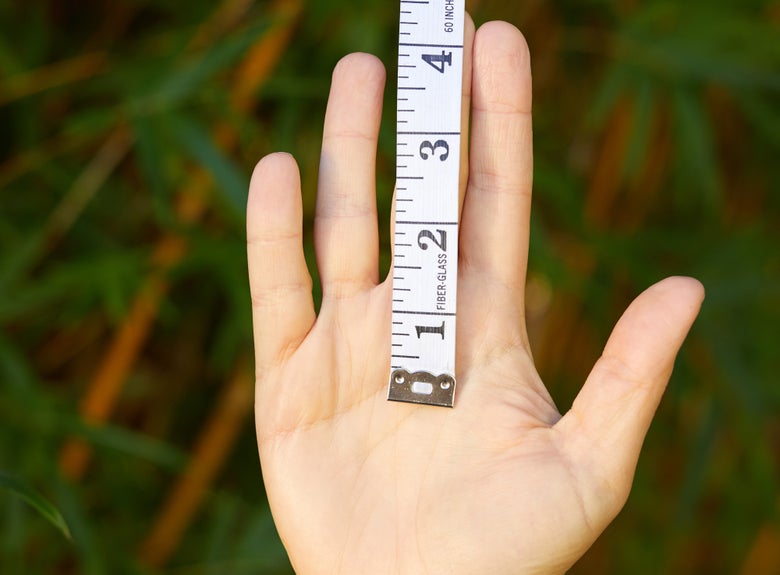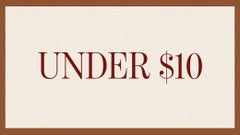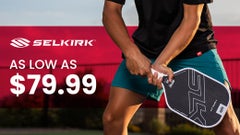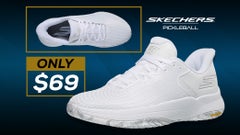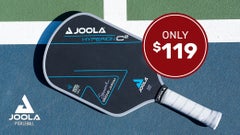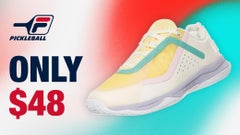The Importance of Pickleball Paddle Handle Length, Shape and Size
Grip size and shape as well as handle length all make a difference for your game and even arm health. Plus, we explain how to make sure you're using the right grip size.
Why You Should Think About Your Paddle's Handle
Every aspect of a pickleball paddle affects its performance, including the handle. Although it may not be the most exciting part of a paddle purchase, the handle is the axis point for swinging the paddle. Due to everyone’s hands being like a signature (similar, but never identical), without a doubt, things like grip size and shape play a major role in terms of how comfortable and effective you are with a particular paddle.
For this article we will focus mostly on grip size and handle length, along with briefly touching on handle shape. In addition, we will offer some advice on how to determine which grip size is ideal for your hands and playing style.
Why the Right Grip Size Matters
In the most simple of terms, a larger grip diameter increases paddle stability, and a smaller grip increases paddle agility. Depending on the size of the hand in question, which handle size is going to feel just right, too big or small will vary from person to person.
A smaller grip diameter has the same effect that a narrower paddle face does, which is easier side-to-side movement of the paddle. The positive is that smaller grips better complement the twist, or rolling, of the paddle, which is part of developing spin on the ball. Larger grips enhance the stability of your paddle, especially when ball contact is off center.
If the grip is a bit too small for the hand in question, it can cause the paddle to feel unstable and twist in your hands (when you don't want it to), especially if ball contact is not dead center. A too large of a grip can affect how agile the paddle feels. For many shots, players can use a shorter swing to delay and disguise their shots until the last moment, then crack the paddle like a whip with the wrist, but if the grip is too big, it can come at the expense of being able to effectively use your wrist as part of the swing.
Grip diameters that are too small can also be the culprit of arm discomfort or even worse over time. The reason is that once players realize the paddle is wobbling in their hand and watches their shots fly off course, the remedy is to squeeze the handle. Squeezing the handle will minimize the shaking of the paddle, but it will also increase the odds that some sort of arm discomfort is going to creep in.
Likewise, using too large of a grip can also lead to arm discomfort for similar reasons. If the grip size is too large, it is hard to hold onto, causing the player to try to grip harder, which also can lead to arm discomfort.
Handle Length
The most obvious benefit of a longer paddle handle is room for creating shots using both hands. Most of us here feel that a handle length of 5.25 inches or longer is suitable for two-handed shot makers.
If you look a little closer and factor in the USAP’s overall 24-inch paddle dimension policy (a paddle's length and width cannot add up to more than 24 inches), you then realize there is a trade-off between paddle face size and handle length, which has a bearing on paddle performance.
For paddles that feature shorter handles, the manufacturer can devote more of the 24-inch limit to the paddle face. The shorter handle with the larger paddle face will feature a bigger sweetspot and thus be more powerful than if the scenario were reversed.
Maximizing handle length comes at the expense of less surface area being used for ball contact and less power. The reduced power level is not really a concrete pro or con: Less power equals more control!
Handle Shape
Most of here at Pickleball Warehouse are pretty sensitive when it comes to grip diameter, and being that there is more than one grip shape available, we also have preferences with regards to handle shape.
In the early days of wood paddles, handles were squared off, maybe with rounded edges. That lasted well in to the first generation of composites, and some current budget paddles still feature more of a square handle. These days, an octagonal handle with a slight rectangular overall shape is the most favored. Most players feel the octagonal handle shape allows a player to more easily and intuitively make grip changes between each shot.
How to Know Which Grip Size is Best for You
Understanding that larger grips promote stability and smaller grips lean toward agility, with every player needing a bit of both, we suggest a middle-of-the-road approach to grip size selection. Here are a couple of ways to gauge what is an appropriate grip size for you.
Method 1: Grip the paddle like you're going to shake hands with or hold the paddle as though you were going to use the edge of it to chop wood. This is a great way to get a feel for whether a particular grip size is suitable.
With your hand in this position, check to see how close the tip of the ring finger is with the skin just beneath the thumb. Ideally, you want a slight gap between the tip of the ring finger and where it would touch the area under the thumb. How much of a gap is where the grip size choice becomes subjective.
Method 2: You can also measure the distance from the middle crease in the palm of your hand to the tip of the ring finger. Using a ruler or measuring tape, measure the distance from the crease to the tip of your ring finger. The resulting measurement gives your grip size.
No matter which way you use to measure it boils down to choosing a grip size that is comfortable and natural feeling to you.
In Conclusion
Players coming from table tennis to pickleball may be feel more comfortable going to a larger grip diameter, while individuals transitioning from tennis may or may not opt for a slightly smaller handle size. Our thought is if you're not giving any thought to your grip during play, that is a good sign that is a proper size, length and shape.
If you're not entirely certain on what you want or need from your next paddle, we're here to help. Pickleball Warehouse (formerly Total Pickleball) has been helping players find the best equipment for their game since 2015. For personalized guidance on any aspect of paddle selection, you can give our gear experts a call at 1-800-679-5954.

